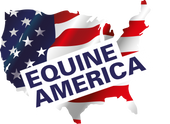Laminitis Part 2 – Understanding the What Happens in the Horse’s Body

In our last blog on laminitis, we discussed the causes and symptoms of laminitis. In this blog we are going to look a bit more into what happens in the horse’s body.
As we already know laminitis is a painful and debilitating disease with 3 main categories of laminitis:
- Endocrine (hormonal) – Equine Cushings Disease (aka PPID) and Equine Metabolic Syndrome (EMS). 90% of cases fall into this category. We now know that many of the traditional laminitis cases once thought of as caused by too much grass, fall into this category and have an underlying endocrine condition that triggers the response to the grass.
- Sepsis-related – diseases associated with systemic illness and inflammation, for example colic, retained placenta post foaling and pneumonia.
- Supporting limb laminitis or mechanical laminitis for example increased weight bearing on the opposite limb following fracture or joint infection. The type of laminitis usually affects just the opposite leg to the original injury.
Despite extensive ongoing research, we still don’t fully understand the exact mechanisms by which laminitis occurs but over the past 20 years we have made huge advancements in our understanding of this horrible disease.
In endocrine (hormonal) laminitis, we know that the hormone insulin plays a key role. Abnormalities of insulin metabolism include hyperinsulinaemia (high insulin) and insulin resistance, and these problems can be collectively referred to as insulin dysregulation (Frank and Tadros, 2014). Insulin dysregulation is an inability to regulate blood insulin levels and can be found in both EMS and PPID. When the body has prolonged excessively high levels of insulin this can induce laminitis, although we still are unsure exactly how this happens. One theory is that high insulin mimics an enzyme called insulin-like growth factor 1 and causes the laminar epithelial cells to multiply, stretch and lengthen, that combined with the weight of the horse, causes movement of the pedal bone and pain. When affected horses consume meals with high carbohydrates such as grass, their bodies have an exaggerated insulin response, which increases the risk of laminitis. Insulin resistance can also occur with obesity, systemic inflammation, pregnancy and stress.
The gut microbiome has attracted a lot of attention in recent years, and rightly so as we know a ‘happy’ equine gut microbiome is vital for keeping the horse healthy. Lippold et al. (2011) found the domesticated horse had reduced microbial diversity compared to wild horses, and we believe this may be important in furthering our understanding of laminitis. Recent research concluded that targeting the intestinal microbiota may be important for preventing laminitis (Tuniyazi et al., 2021). One of the theories explains how high carbohydrates affects the hindgut microbes, causing proliferation of the ‘bad’ ones and a drop in pH in the gut. This then kills off the ‘good’ microbes and results in a release of matrix metalloproteinases as well as other things and this can then set off a sequence of events including disruption in the blood supply in the foot leading to laminitis.
Diseases such as colic and retained placenta post foaling, cause inflammation. This causes systemic inflammation around the body, also causing inflammation in the laminae, and consequently laminitis.
With load bearing/ mechanical laminitis, our current thinking is that the excessive and continuous weight bearing causes an inadequate blood supply to the lamellar tissue. This lack of blood supply to the foot, results in tissue damage to the laminae, resulting in a loss of support to the pedal bone, leading to foundering (sinking) and/ or rotation.
Laminitis affects front feet more commonly than hindlimbs and we understand this is caused by the differential weight distribution with 60% of bodyweight going to the forelegs compared to 40% on the hind limbs.
Despite not fully understanding the exact mechanism, we do know that the consequence is the same, with these events causing lamellar attachment failure through adhesion loss, inflammation and tissue damage (Elliot and Bailey, 2023) leading to rotation and sinking of the pedal bone. An easy way to understand it is to imagine the laminae are like Velcro sticking the pedal bone and hoof wall together to keep the pedal bone suspended within the hoof. When laminitis occurs, the Velcro loses its stick and the pedal bone moves, either rotating or sinking down towards the sole (also known as foundering).
Our next blog in this series will look at nutritional support for the laminitis prone horse and pony.

References:
Frank and Tadros (2014) Insulin Dysregulation. Equine Veterinary Journal 46: 103-112
Elliot and Bailey (2023) A Review of cellular and molecular mechanisms in endocrinopathic, sepsis-related and supporting limb equine laminitis. Equine Veterinary Journal 55: 350-375
Lippold S, Matzke NJ, Reissmann M, Hofreiter M. Whole mitochondrial genome sequencing of domestic horses reveals incorporation of extensive wild horse diversity during domestication. BMC Evol Biol. 2011;11:328.
Tuniyazi et al. (2021) Changes of microbial and metabolome of the equine hindgut during oligofructose-induced laminitis. BMC Veterinary Research, 17:11.

